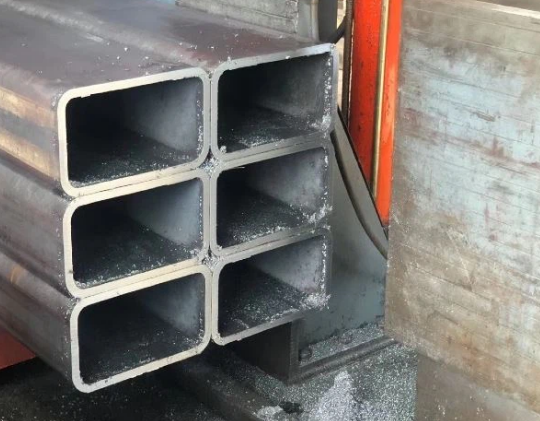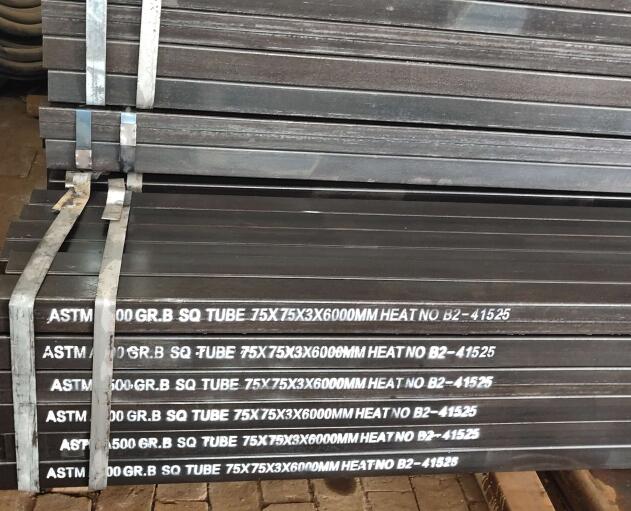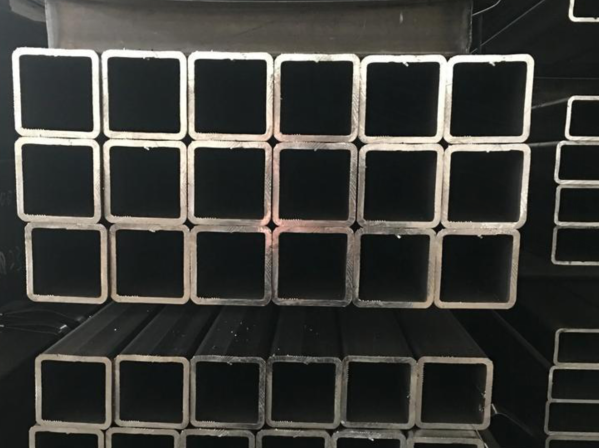
Structural Use: Suitable for structures subjected to static and dynamic loads, such as building frames, towers, conveyor systems, etc.

ASTM A500 Pipe & Tube Size range:
The standard is divided into the following grades and types according to the shape of steel pipes:
A500 Gr.A: round, square and rectangular pipes.A500 Gr.D: only for round and square pipes (with higher yield strength).

|
Elements |
Gr.A (%) |
Gr.B (%) |
Gr.C (%) |
Gr.D (%) |
|
C |
≤0.26 |
≤0.30 |
≤0.23 |
≤0.27 |
|
Mn |
≤1.35 |
≤1.35 |
≤1.35 |
≤1.35 |
|
P |
≤0.035 |
≤0.035 |
≤0.035 |
≤0.030 |
|
S |
≤0.035 |
≤0.035 |
≤0.035 |
≤0.030 |
|
Cu |
≥0.20 |
≥0.20 |
≥0.20 |
≥0.20 |
If used for welded structures, carbon equivalent (CE) may need additional control (usually ≤0.50).
- Grade A: Low carbon content, with certain strength requirements, suitable for some general structural uses that do not require particularly high strength.
- Grade B: Compared with Grade A, the strength is improved, and it can be used for structural parts with higher strength requirements.
- Grade C: High carbon content, high strength, durability and good toughness, suitable for structures with large loads.
- Grade D: Higher carbon content, heat treatment is required to meet higher strength and toughness requirements, usually used in structural parts with strict material performance requirements. For square and rectangular tubes, the yield strength requirements of each grade are higher than those of round tubes.
|
Grade |
Yield strength (MPa) |
Tensile strength (MPa) |
Elongation (%) (gauge length 50mm) |
|
Gr.A |
≥230 (33 ksi) |
310-427 (45-62 ksi) |
≥25 (round tube) ≥23 (square/rectangular tube) |
|
Gr.B |
≥317 (46 ksi) |
400-550 (58-80 ksi) |
≥23 (round tube) ≥21 (square/rectangular tube) |
|
Gr.C |
≥345 (50 ksi) |
427-550 (62-80 ksi) |
≥21 (round tube) ≥19 (square/rectangular tube) |
|
Gr.D |
≥386 (56 ksi) |
483-621 (70-90 ksi) |
≥15 (round tube) ≥15 (square tube) |
The elongation requirement varies with the wall thickness, and thicker tubes may require lower requirements.
Inspection and testing:
Various inspection and testing methods for pipes are specified, such as appearance inspection, dimensional measurement, mechanical property testing, chemical composition analysis, etc. Sampling methods and inspection frequencies are also included to ensure that each batch of pipes meets the standard requirements.
Marking and packaging:
The production, steel grade, specification, batch number and other information should be marked on the pipe for easy traceability and management. The packaging should be able to protect the pipe from damage and corrosion during transportation and storage.
ASTM A1085: a newer standard with optimized chemical composition and mechanical properties, replacing some A500 applications.
A500 Grade selection suggestions:
Grade B: It is the most commonly used grade, suitable for most buildings and mechanical structures.
Grade C: Suitable for high-load structures such as bridges and heavy equipment supports.
Grade D: Mainly used for round tubes that require heat treatment to improve strength and toughness.

Application of ASTM A500 Square and Rectangular Tube:
Architectural structure:
High-rise building frame, steel structure factory, wall and floor and other heavy-duty structures
Glass curtain wall, door and window decoration, guardrail and other decorative structures
Machinery manufacturing:
Engineering machinery frame, conveying equipment bracket
Automobile chassis, motorcycle rack, shelf and fitness equipment
Infrastructure construction:
Bridge support structure, tunnel reinforcement
Power facilities, agricultural greenhouse and water conservancy projects
Transportation:
Railway vehicle structure, container manufacturing
Ship parts and aviation auxiliary equipment
Other fields:
Fluid transportation pipeline (water/gas/fire protection)
Furniture manufacturing, leisure equipment and oil casing
Read more: Types of Seamless Carbon Steel Pipes
